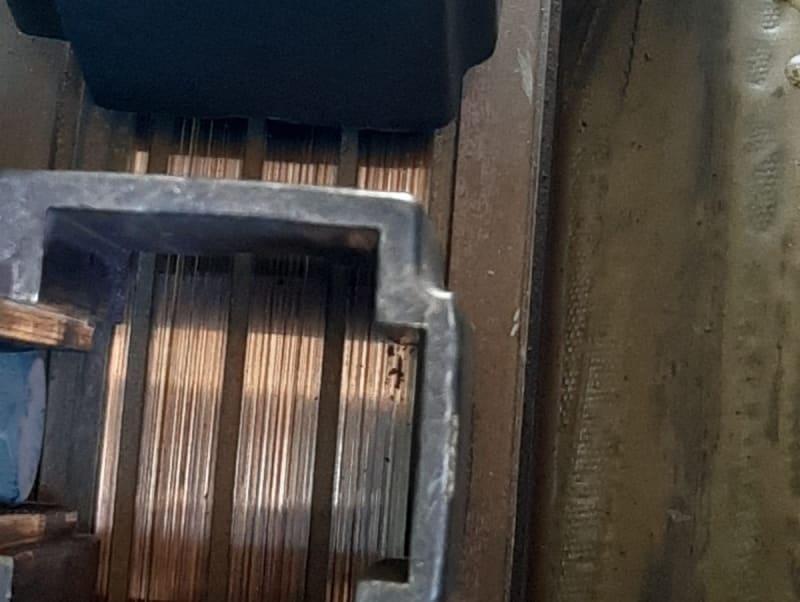Hi,
We have two 5 MW 6.6 k V wound motors driving a crusher in tandem. We have always been running the crusher with the two motors powered. Now because of load reduction, only one motor is powered and the powered electric motor drives both the load and the second motor. We noticed a very strange phenomenon on the slip ring of the unpowered motor. See attached picture. The commutator has started to wear out. It is worth pointing out that we have been operating like this for only a couple of days and the surface of the slip ring of the unpowered motor was initially very smooth. The slip ring of the powered motor is fine. The slip ring of the unpowered motor is shorted. What could cause the slip ring to wear out? Thanks for any inputs.
Guardiano
We have two 5 MW 6.6 k V wound motors driving a crusher in tandem. We have always been running the crusher with the two motors powered. Now because of load reduction, only one motor is powered and the powered electric motor drives both the load and the second motor. We noticed a very strange phenomenon on the slip ring of the unpowered motor. See attached picture. The commutator has started to wear out. It is worth pointing out that we have been operating like this for only a couple of days and the surface of the slip ring of the unpowered motor was initially very smooth. The slip ring of the powered motor is fine. The slip ring of the unpowered motor is shorted. What could cause the slip ring to wear out? Thanks for any inputs.
Guardiano

